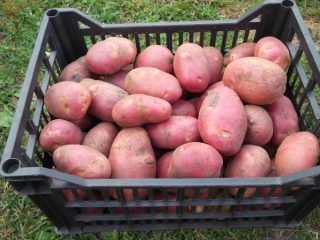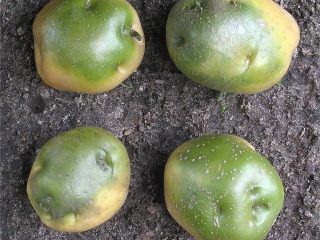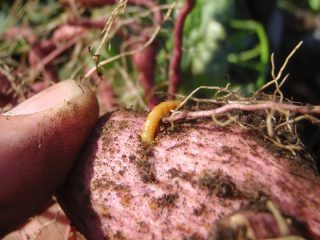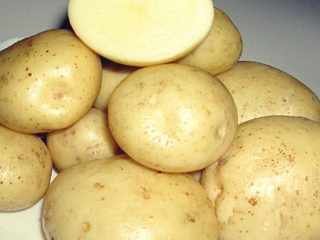Content
Many beginning gardeners do not know whether it is better to plant large potatoes or use small ones for planting. But the volume of the harvest directly depends on this, and no fertilizing can increase plant productivity if a mistake was made initially. Therefore, it is worth figuring out what size seed potatoes should be for planting so that the crop’s productivity is maximized.
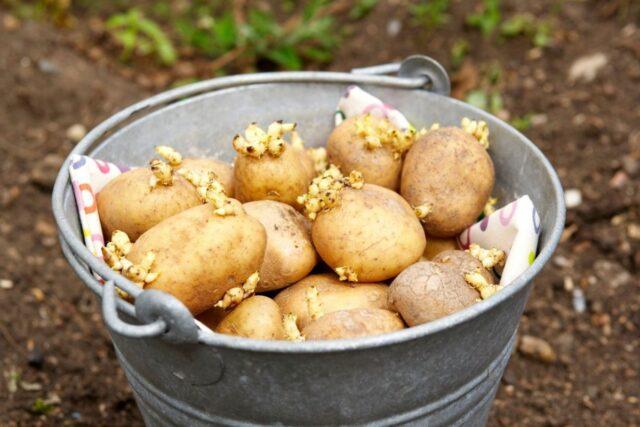
Planting material must be intact, without mechanical damage
What size should potatoes be for planting?
After harvesting, experienced gardeners always immediately sort the tubers, depending on their further use. Large potatoes without mechanical damage or signs of disease are usually used for food. Small specimens are used to feed domestic animals, and medium ones are selected as seed material.
According to experts, it is considered optimal that potato tubers for planting should be the size of a chicken egg, weighing 70-80 g. This is explained by their high vital potential, allowing for a good harvest at the end of the season.
In addition, when selecting seed potatoes, it is recommended to focus on the transverse diameter of the seeds, since they can have different shapes. For elongated varieties it should be 28-55 mm, and for round and oval varieties it should be within 30-60 mm.
Is it possible to plant small potatoes?
Many gardeners are of the opinion that it is better to use small potatoes for planting. But in this case, they put several potatoes in one hole, since they believe that the more sprouts, the better. However, this cannot be done.
After all, there is a concept of stem density. Each sprout requires a certain amount of light, nutrients and moisture. Only in this case the effectiveness of the bushes will be maximum, since each shoot will be able to fully develop. Therefore, it is believed that for every sq. m of plot there should be no more than 25-30 stems.
Also, according to experts, small potatoes do not have a sufficient supply of nutritional components. But they are necessary for the full rooting of tubers and their active growth at the initial stage of development. Therefore, when planting small potatoes, you should not count on good results.
Is it possible to plant large potatoes?
It will also not be possible to achieve a good harvest when using large seed tubers in their entirety. This is due to the fact that potatoes of this size begin the growing season much later than average specimens. When planting large tubers, the sprouts are able to feed from the supply of components contained in the seed, so the plant does not need to immediately form and develop a root system.
In addition, if you plant large-sized potatoes, a large number of stems will form in one bush. And by the time of harvest, the fruits still remain underdeveloped, since they did not have the opportunity to fully develop throughout the entire season due to the slow growth rate at the initial stage.
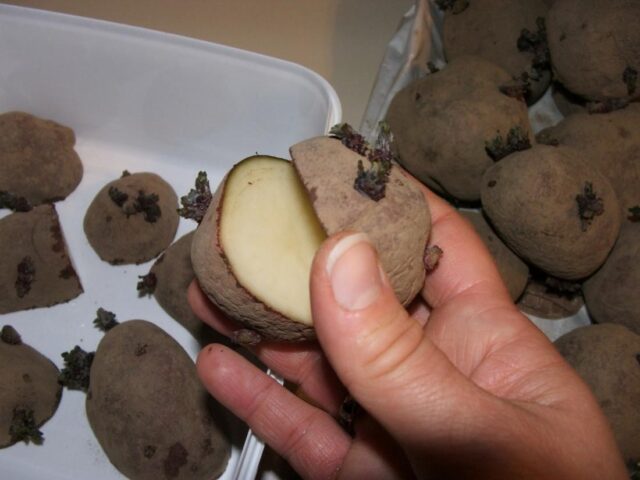
Large potatoes can be used for planting, but after preliminary preparation
If you need to plant large potatoes in the absence of another option, it is recommended to cut the seed tubers into pieces. It is important that no more than five sprouts remain on each of them. In this case, the stems will not compete with each other. Large tubers need to be divided a couple of days before planting so that the sections can dry. In this case, it is necessary to take into account the location of the sprouts so that the resulting parts can provide them with the necessary nutrition.
Other criteria for selecting seed potatoes
Regardless of the size of the planting material, other selection criteria must be taken into account. After all, a good potato harvest can only be harvested if the seed tubers correspond to the declared characteristics of the variety.
Basic selection rules:
- compliance with the climatic conditions of the region;
- preference for soil composition;
- a sufficient number of eyes;
- absence of signs of pests and diseases;
- ripening time;
- resistance to adverse external factors.
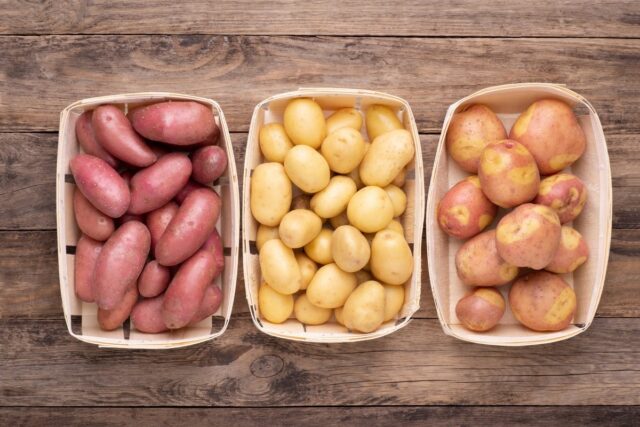
In order not to make a wrong choice, you need to purchase certified planting material
Preparing potatoes for planting
To increase crop productivity, it is necessary to first prepare seed potatoes for planting. Germination is used for this. It makes it possible to identify hidden diseases by weak shoots. This procedure also speeds up the emergence of seedlings, strengthens the plant’s immunity and promotes the development of a powerful root system.
To sprout, you need to bring the potatoes into a warm room with a temperature of +15 ° C and pour them in one layer on a hard surface. The tubers need to be kept in this mode for 3-4 weeks, turning them over every seven days.
For early varieties, a different germination method is recommended. In this case, pour a 2 cm thick layer of wet sawdust or peat onto the bottom of the box or basket, and place the tubers on top. In the future, the layers need to be alternated until the container is completely filled. The optimal maintenance regime is +15-25 °C for two weeks.
It is also recommended to spray large or medium-sized potatoes with a solution of Zircon or Epin the day before planting. These drugs will increase the immunity of seedlings at the initial stage of growth and accelerate the emergence of seedlings.
And in case of an increased probability of damage to young shoots by the Colorado potato beetle, it is recommended to use the drug Prestige. Seed treatment should be carried out several hours before planting. To do this, place the potatoes on film, spray them evenly with the solution, and then mix gently. Prestige cannot be used to process large cut potatoes. After the solution has dried, the tubers can be planted.
Conclusion
It is possible to plant large potatoes, as opposed to small ones, if you divide their parts correctly.Otherwise, its slow rate of development at the initial stage of bush growth will lead to a significant reduction in the yield of the variety. But the optimal option is considered to be medium-sized specimens that have all the necessary qualities for the successful development of the crop during the season.


